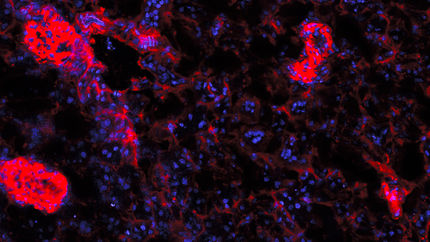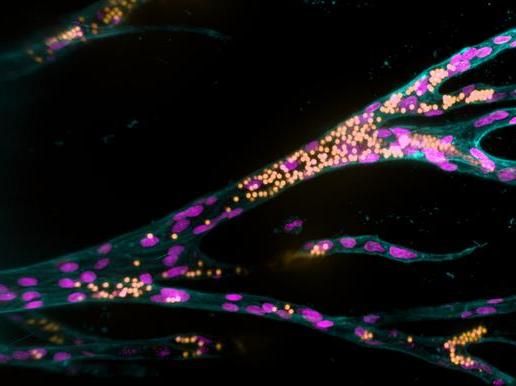Four new psoriasis ‘hotspots’ identified by U-M geneticists
Discovery may aid in developing new therapies
Scientists at the University of Michigan Heath System and their collaborators have found four new DNA “hotspots” that may one day help guide new treatments for psoriasis, one of the most common autoimmune diseases in the country.
Using cutting-edge methods to peer into the hidden genetic underpinnings of the disabling and disfiguring disease, the research, published in Nature Genetics, further maps the as-yet unknown territories of psoriasis and psoriatic arthritis.
The findings could lead to new drug targets and tailored treatments for the skin disease, says James T. Elder, M.D., Ph.D., the Kirk D. Wuepper Professor of Molecular Genetic Dermatology and lead investigator on the study, which included researchers from the Department of Dermatology and School of Public Health.
“This is a hot topic in genetics these days,” Elder says. “Even when you add up all the genes that have been found around the world so far, they only account for about 40 percent of the genetic liability to psoriasis. The question among geneticists continues to be, ‘Where is the dark matter?’ ”
The new research builds on past work by the U-M team, whose discoveries have helped to unveil the hereditary factors of the disease and provide scientists with a better understanding of psoriasis’ relationship to other autoimmune diseases, such as Crohn’s disease, rheumatoid arthritis and lupus.
So far, research worldwide has linked 25 genes to psoriasis, which has a strong hereditary component. Including the new discoveries, Elder’s team was involved in finding more than half of them.
Two of the four new susceptibility loci – or “hotspots” – were strongly linked to psoriatic arthritis, a painful and destructive form of arthritis that affects about 1 in 4 psoriasis patients, Elder says.
The roughly 7.5 million Americans with psoriasis also have a higher risk of dying from related cardiovascular problems.
Once a full catalog of psoriasis genes has been identified, scientists hope to generate a “psoriasis gene profile” that can predict one’s risk of developing the disease and pave the way for innovative treatments. Current treatments, including different types of immunosuppressive agents, aren’t always effective and can cause serious side effects – though a new drug called Stelara (ustekinumab), which targets one of the genes they discovered, has been giving patients months-long relief, Elder says.
U-M Professor of Biostatistics Goncalo R. Abecasis, D. Phil, was instrumental in designing software and statistical methods to analyze more than 6 million genetic variants from more than 4,000 people.
“It was a pretty daunting task,” Abecasis says. “We looked in greater detail at genetic variation than is typical so that we can understand the biology behind psoriasis and build better drugs.”
Methodology: The U-M led, multi-center, international study analyzed data from two recent psoriasis genome-wide association studies involving more than 4,300 individuals, with and without the disease. Those findings were followed up in a three-stage replication study involving more than 8,700 people. The newly identified loci include one at NOS2, one at FBXL19, one near PSMA6-NFKBIA, and one near TRAF3IP2. U-M led the research in the discovery of three of the loci. The TRAF3IP2 locus was reported in a second paper to be published in the same issue of Nature Genetics, in which Elder’s collaborators from the University of Kiel in Germany took a leading role.
Orignal publication: Nature Genetics, published online Oct. 17, 2010

























































